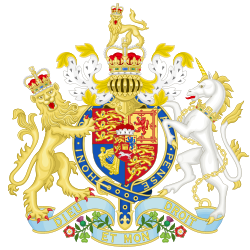| Act of Parliament | |
 | |
| Long title | An Act for supplying with Water the Inhabitants of Kensington, Hammersmith, Brentford, Battersey, Putney, Richmond and several other Parishes and Places in the Counties of Middlesex and Surrey. |
|---|---|
| Citation | 46 Geo. 3. c. cxix |
| Territorial extent | United Kingdom |
| Dates | |
| Royal assent | 12 July 1806 [b] |
| Other legislation | |
| Amended by | |
| Relates to | |
Status: Amended | |
| Text of statute as originally enacted | |
The West Middlesex Waterworks Act 1806 [a] (46 Geo. 3. c. cxix) is an act of the Parliament of the United Kingdom of Great Britain and Ireland that incorporated and established the West Middlesex Waterworks Company for the purposes of supplying various parishes and townships in the counties of Middlesex and Surrey from the River Thames.
Contents
The act authorised the proprietors of the West Middlesex Waterworks Company to raise £30,000, divided into shares of £100 each, with power to raise a further sum of £50,000.